I had heard about Kyoto from countless travelers over the years, and with such passion that most would say leave Tokyo behind if you had limited time and just explore the north, taking in as much Kyoto as you can. It depends on who you talk to of course, however Kyoto is certainly a place that draws the crowds because of his historical and cultural past and the fact that it is stunningly beautiful.
When you imagine Japan, you think of its remarkable Shinto shrines, Zen temples and sublime Zen gardens, with geisha in abundance, and beautifully colored robes and umbrellas on every corner. Kyoto is a bit like that, but with modern influences throughout.
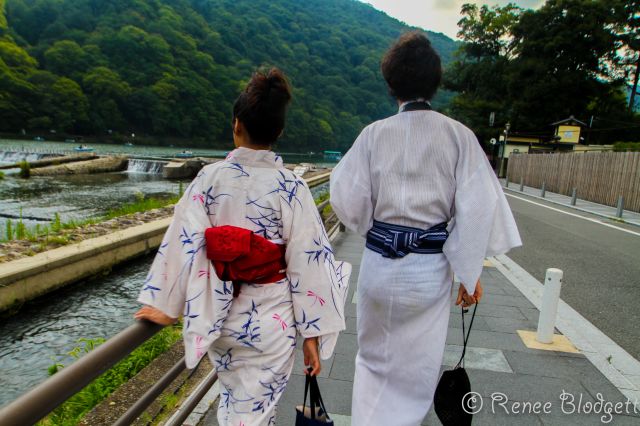
Kyoto is located in the central part of the island of Honshu, Japan. I didn’t get there the way most might on a more traditional tour of Japan, which would be a bullet train from Tokyo or one of the direct buses. I landed via ship at the port of Maizuru in central Japan on the west coast and from there, took a bus to various parts of Kyoto, which included shrines and temples.
For a city with a population of 1.5 million, it’s astonishing that you still hear the word quaint as this Japan gem’s description. Formerly the imperial capital of Japan for more than one thousand years, it is now the capital city of Kyoto Prefecture. One historical nickname for Kyoto is the City of Ten Thousand Shrines. And it is indeed; its countless shrines, temples and gardens are what paint the picture of quaint in one’s mind and why Kyoto has such a reputation for its sheer beauty and charm.
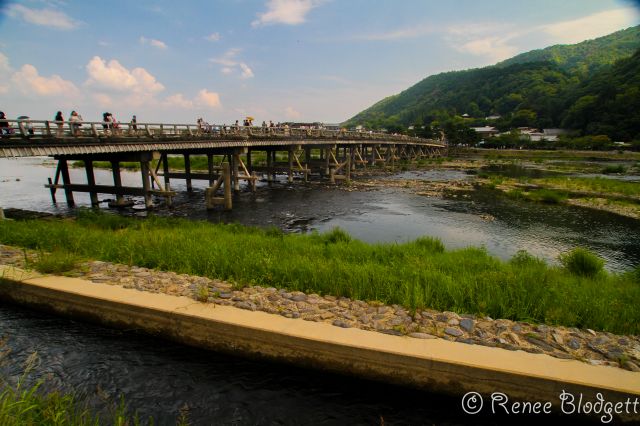
Historically, Kyoto served as Japan’s capital and the emperor’s residence from 794 until 1868. Despite the fact that Kyoto was destroyed by fires and wars over the years, it luckily got spared from air raids during World War II which means that its beautiful temples and shrines remain standing today.
This post takes in the shopping culture, and some of the cultural and historical aspects including the Togetsukyo Bridge, Arashiyama’s well known, central landmark. Many small shops, restaurants and other attractions are found nearby, including Tenryuji Temple and Arashiyama’s famous bamboo groves and pleasure boats that are available for rent on the river. I wrote about the Bamboo Forest in a separate article.
North of central Arashiyama, it becomes more rural and there are several small temples scattered along the base of the wooded mountains. In Western Kyoto, be sure to visit Kokedera, called a moss temple because of its garden and Katsura Villa, an Imperial Villa which has a stunning landscape garden.
In Northern Kyoto, be sure not to miss the Kinkakuji, which is an exquisite golden temple, the Imperial Shugakuin Villa, Kibune, a town with a pretty shrine in the northern mountains, the Ninnaji Temple and Kurama, a rural town with a temple and hot springs. There is also Ryoanji Temple, the famous temple with a rock garden, which we wrote about in a separate article. Be sure to check it out as we include a lot of great photos.
In eastern Kyoto, you can visit Kiyomizudera, which is famous for its large wooden terrace and 3 temples: Ginkakuji, Sanjusangendo, which has 1,001 human sized statues, and Nanzenji Temple, a zen temple with a lovely stone garden. Also famous in the east part of Kyoto is Higashiyama, a well known historical district and Gion, Kyoto’s most famous geisha district.
In central Kyoto, Nishiki Market is well known and Nijo Castle, Former Kyoto residence of the shogun and Kyoto Imperial Palace.
Below, a Japanese family dines next to us at a shared table at Cafe Arashiyama Rusk, one of the larger restaurants in the area. We had no shortage of things to nibble on. Yum!
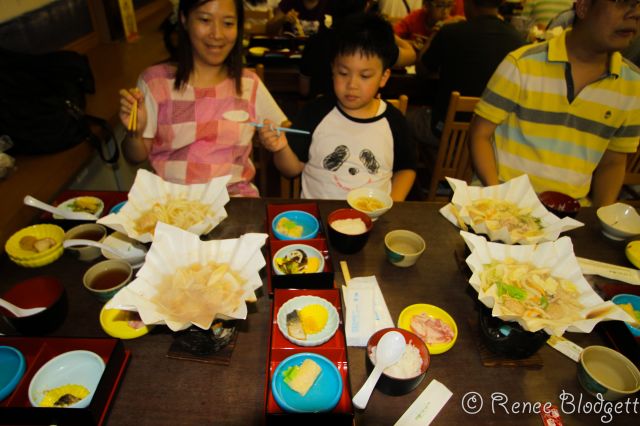
Kyoto is also a shopper’s delight, with a myriad of fans, kimonos, dresses, robes, umbrellas, silk materials, scarves, bags and hats to choose from.
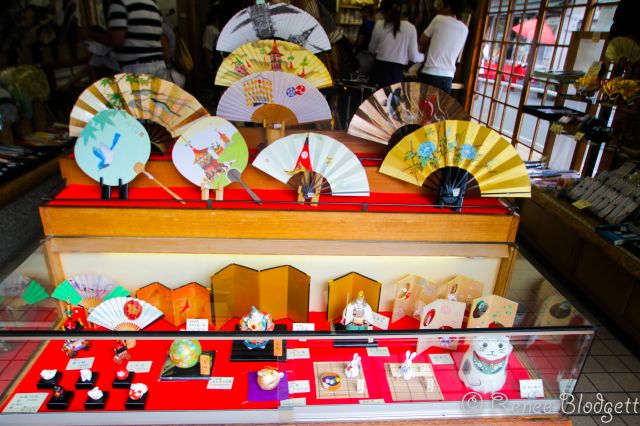
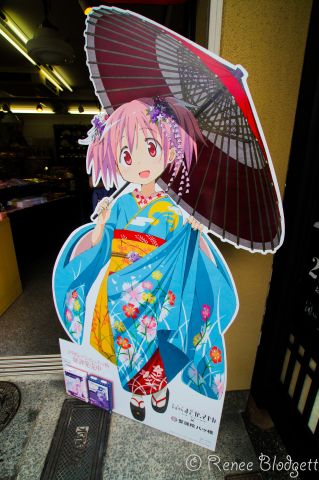

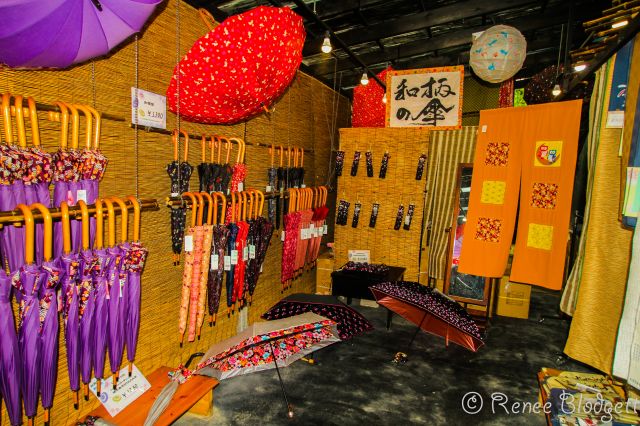
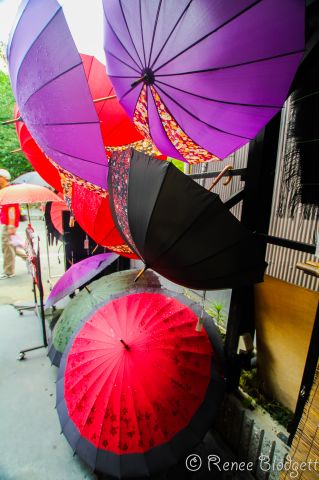
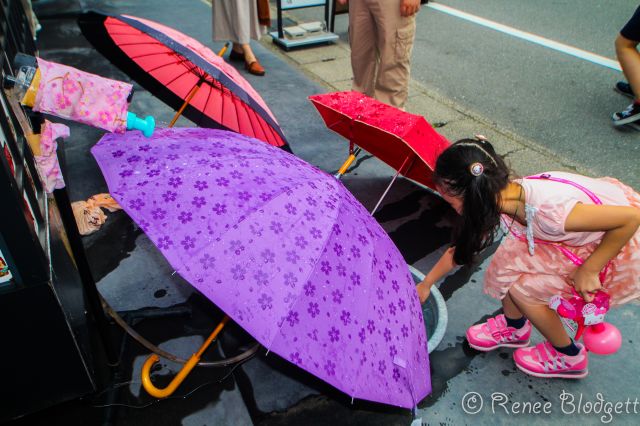

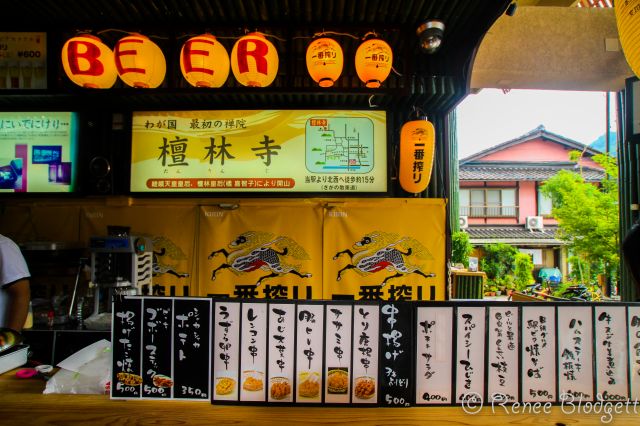
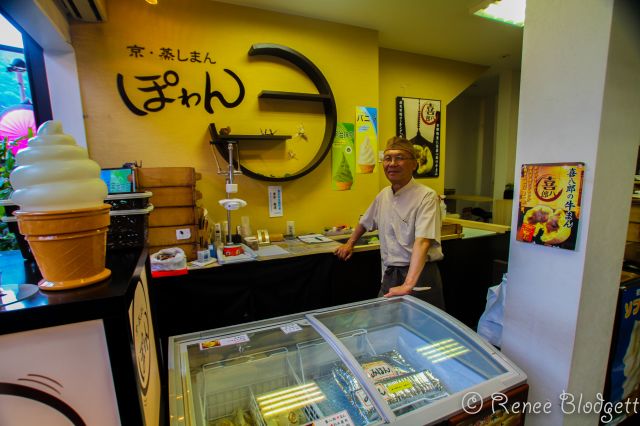
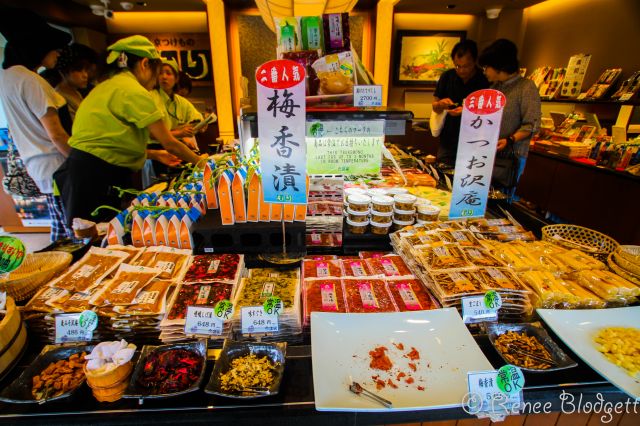
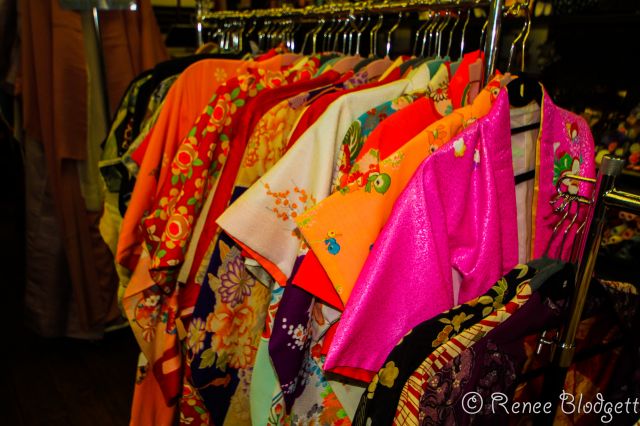
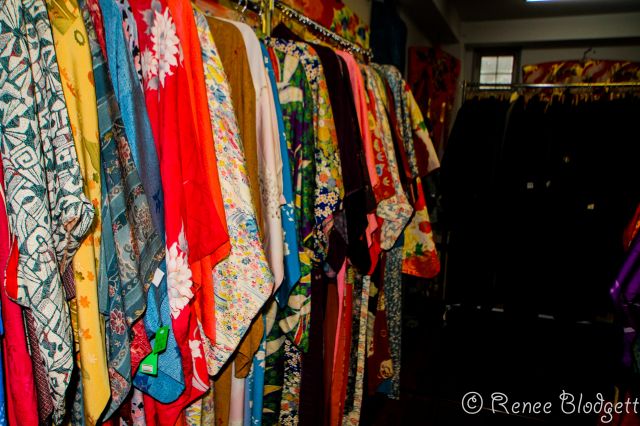
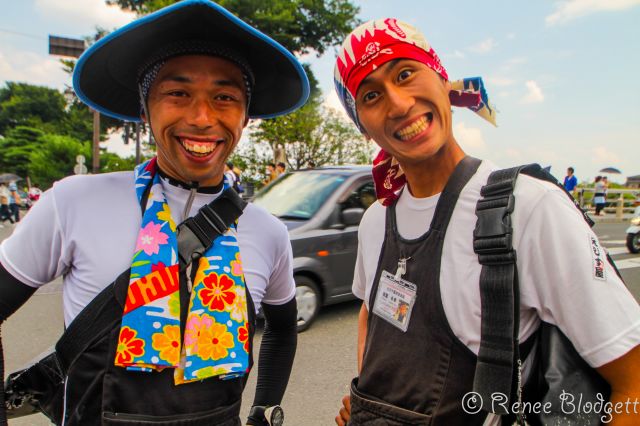
The river is of course nearby and a long leisurely walk past it is a definite must do regardless of how much time you have.

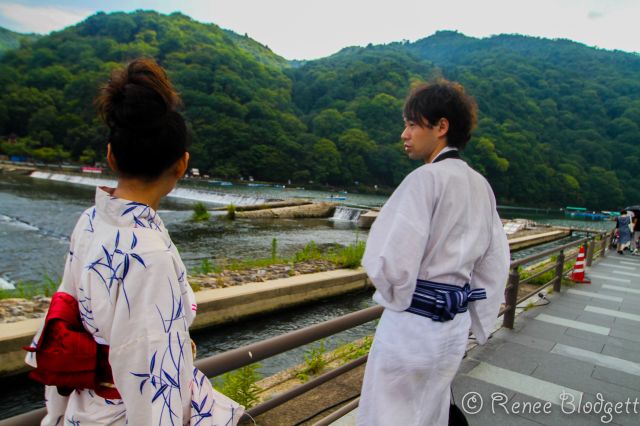
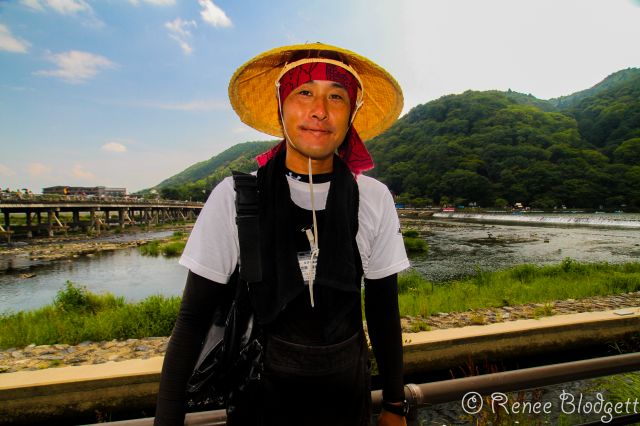
OR, of course you could get a bike and cycle around the area in which case you could cover more ground. It is incredibly serene and beautiful.
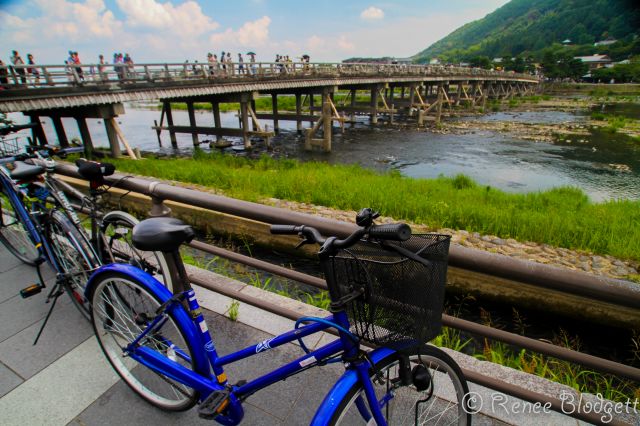
For more posts on Japan, see our Japan section and on Tokyo, visit our Tokyo Japan / top things to do in Tokyo section.
Details:
Getting There By Japan Railways (JR)
The fastest access from Kyoto Station to Arashiyama is provided by the JR Sagano Line (also known as JR Sanin Line). The one way ride to Saga-Arashiyama Station takes 15 minutes and costs 240 yen. From Saga-Arashiyama Station, central Arashiyama can be reached in a 5-10 minute walk.
Getting There By Keifuku Railways (Randen)
The small trains on the Keifuku Arashiyama Line connect Arashiyama with Omiya Station at the intersection of Shijo Street and Omiya Street in central Kyoto (20 minutes, 200 yen). Keifuku Railways also provides access to Kitanohakubaicho Station in northern Kyoto, not far from Kinkakuji, Ryoanji and Ninnaji Temples (20-30 minutes, 200 yen). One transfer of trains is required along the way. Keifuku Arashiyama Station is located in the very center of Arashiyama.
Getting There By Hankyu Railways
From Kawaramachi or Karasuma Station in central Kyoto (Shijo Street), take the Hankyu Main Line to Katsura Station and transfer to the Hankyu Arashiyama Line for Arashiyama. The one way trip takes about 20 minutes and costs 220 yen. Hankyu Arashiyama Station is located on the opposite side of the river, about a 5-10 minute walk from central Arashiyama.
Note: Princess Cruises sponsored my trip to Japan, however all side trips and attractions and my opinions of them are entirely my own and are not shaped by taking the cruise with them.

Renee Blodgett is the founder of We Blog the World. The site combines the magic of an online culture and travel magazine with a global blog network and has contributors from every continent in the world. Having lived in 10 countries and explored nearly 80, she is an avid traveler, and a lover, observer and participant in cultural diversity.
She is also the CEO and founder of Magic Sauce Media, a new media services consultancy focused on viral marketing, social media, branding, events and PR. For over 20 years, she has helped companies from 12 countries get traction in the market. Known for her global and organic approach to product and corporate launches, Renee practices what she pitches and as an active user of social media, she helps clients navigate digital waters from around the world. Renee has been blogging for over 16 years and regularly writes on her personal blog Down the Avenue, Huffington Post, BlogHer, We Blog the World and other sites. She was ranked #12 Social Media Influencer by Forbes Magazine and is listed as a new media influencer and game changer on various sites and books on the new media revolution. In 2013, she was listed as the 6th most influential woman in social media by Forbes Magazine on a Top 20 List.
Her passion for art, storytelling and photography led to the launch of Magic Sauce Photography, which is a visual extension of her writing, the result of which has led to producing six photo books: Galapagos Islands, London, South Africa, Rome, Urbanization and Ecuador.
Renee is also the co-founder of Traveling Geeks, an initiative that brings entrepreneurs, thought leaders, bloggers, creators, curators and influencers to other countries to share and learn from peers, governments, corporations, and the general public in order to educate, share, evaluate, and promote innovative technologies.








